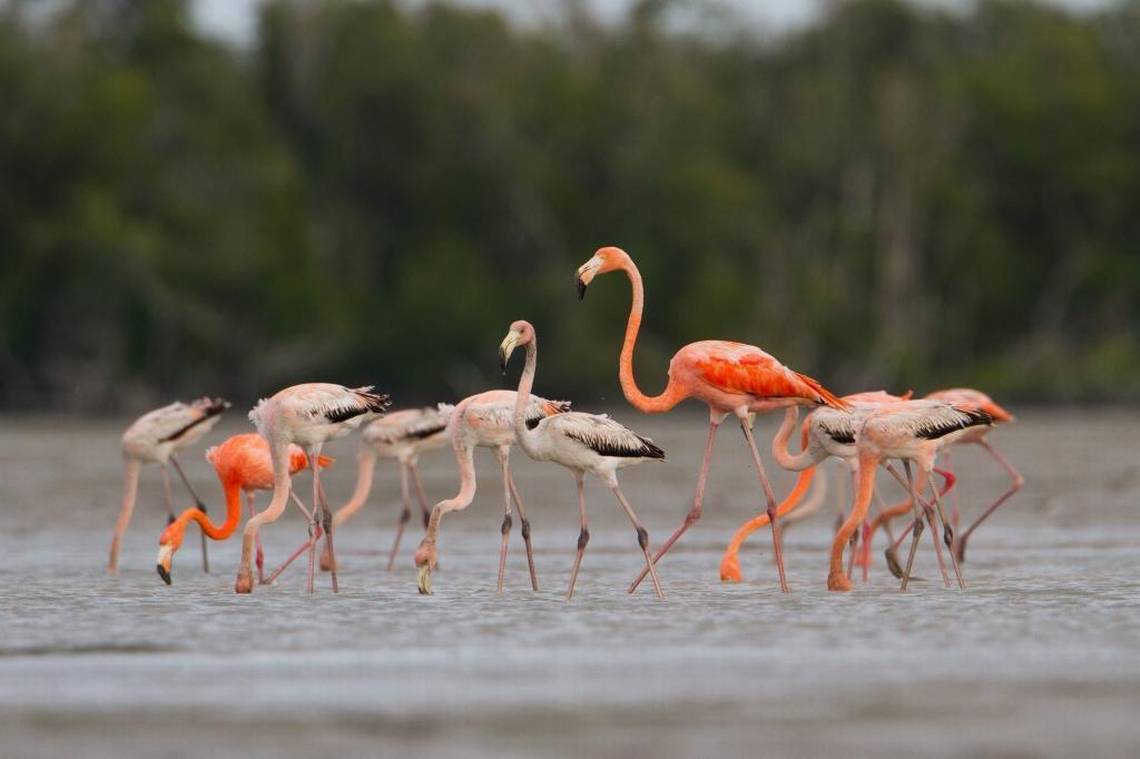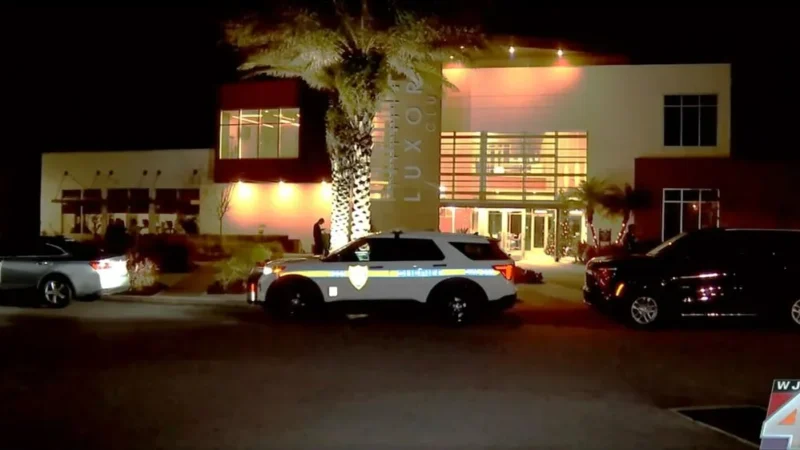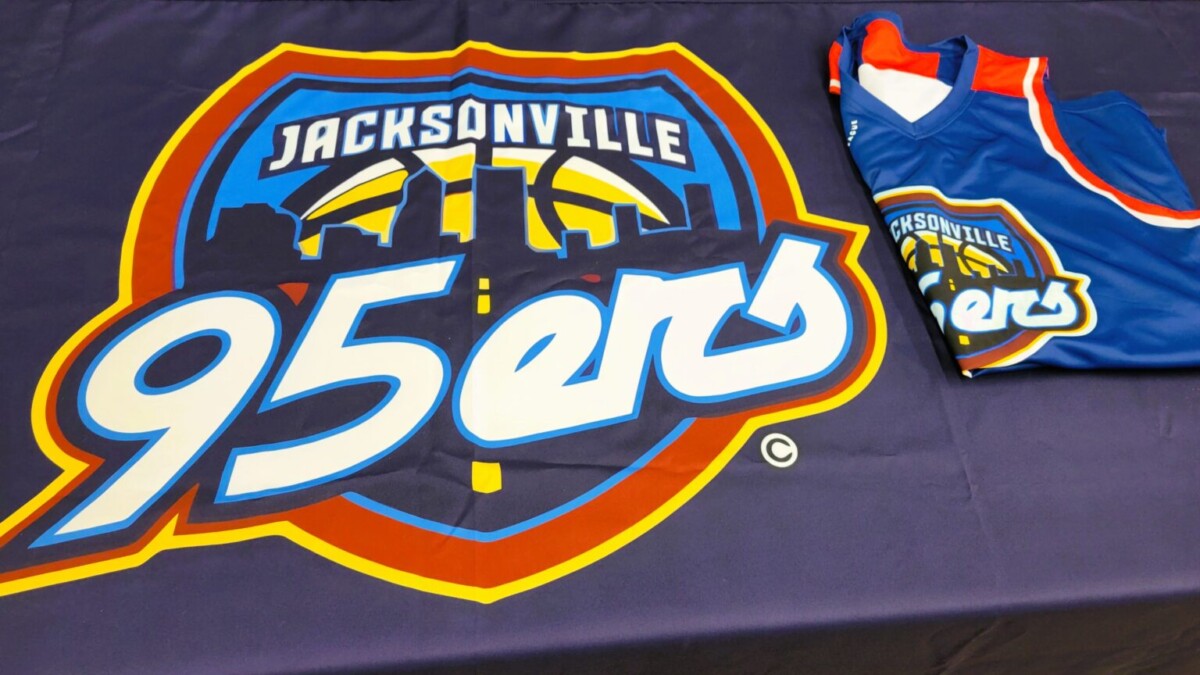Flamingo fans are wading into Florida’s perennial debate over whether to dethrone the noisy and occasionally combative mockingbird as the reigning state bird after nearly a century.
Two bills — SB 918 and HB 753 — now making their way around Tallahassee propose electing the graceful wading bird to the perch. The move comes after more than a decade of research concluded flamingos, which once inhabited the state by the thousands and likely nested in parts of the Everglades and Southwest Florida, are rebounding after being hunted to extinction in wetlands that were mostly reconfigured for flood control.
But to succeed, team flamingo will have to beat team scrub-jay, as well as a fan club vying to crown the bluish gray songbird found only in Florida’s sandy oak hammocks.
“I love the Florida scrub-jays. The northern mockingbird? I have nothing against them. Spoonbills are awesome,” said veterinarian Frank Ridgley, who has been working with a team of scientists studying flamingos since 2012 and is head of conservation and research at Zoo Miami.
READ MORE: The case of the (not) missing flamingos: A South Florida detective story
But flamingos, he argued, could draw wider attention to all state birds, and possibly be a boon for tourism.
“I went to Aruba just to go see the flamingos on the beach there,” he said.
Elevating the bird from lawn ornament status to state bird could also help return flamingos to their rightful place — as a native species that can once again call Florida home. After Louisiana named the brown pelican its state bird in the ’60s, attention helped support breeding programs that revived the state’s disappearing population, he said.
“State bird is free. It doesn’t cost any money, doesn’t come with any new protections,” added Ridgley. “Pretty much everywhere the flamingo needs is already protected. The state and national parks are where they want to be. So this is nothing but bringing attention.”
It also could cement the bird’s native status following decades where flamingos appearing in Florida were dismissed as vagrants from around the Caribbean or escapees from captive flocks.

The public is being asked to report flamingo sightings later this month as part of a survey to estimate the number of flamingos in Florida and the Caribbean. | Audubon Florida
Wiped out … or were they?
After the plume trade wiped out most of the Florida flamingos, along with vast numbers of other wading birds, ornithologists beginning in the 1950s concluded that any found in the state had wandered over from the Caribbean and Yucatan. Captive flocks at the racetrack at Hialeah Park, the Miami Rare Bird Farm in Kendall, Crandon Park Zoo or Bok Tower in Lake Wales routinely strayed.
Then in 2012, after a group of scientists spotted a flock in the Everglades, scientists began to wonder if they were wrong. Sightings across the state had increased since water management practices improved and southern flocks increased. Maybe the local birds weren’t vagrants or escapees after all, but wild flamingos from down south reclaiming their territory.
“I remember we were having tacos in Homestead at one of those great Mexican restaurants,” Ridgley said, recounting an early discussion during an annual meeting of Everglades scientists. “We started talking about American flamingos because one of the people in the National Park Service had taken a photo. He had seen these juvenile flamingos and this small flock of about a dozen birds and we were like, are those even old enough to fly?”
Permits issued by the state to study the birds had listed them as non-native, but evidence collected by the scientists, and published in a study in 2018, argued that they were in fact once native, and should still be considered native.
Audubon Florida scientist Jerry Lorenz was one of the early skeptics won over by the findings after Rigdgely and Steve Whitfield, a former zoo biologist who is now conservation director at the Audubon Nature Institute.
“Back in the ’50s, when the person who founded my office, Robert Porter Allen, was studying flamingos, they were so few of them,” Lorenz said. “That’s why he was studying. They’d been basically hunted to damn near extinction throughout their range.”
When Allen started counting, he found flamingos nesting in only four locations in Florida. The dramatic drop from previous counts that estimated a population as high as a half million led Florida to conclude that any now found in the state were an introduced species from captive flocks.
The new research led Lorenz to reconsider flamingos he’d seen around Florida Bay going back two decades.
“I was like, you know, if all those birds escaped from Hialeah, somebody in Hialeah would be looking for them,” he said.

Flamingos have been a regular sighting at a stormwater treatment marsh in Palm Beach County. Retired Big Cypress National Preserve resource management chief Tony Pernas photographed this flock in 2013. | Pony Pernas, National Park Service
Climate change and water management
He believes climate change pushing flocks in the Caribbean and Yucatan further north, along with improvements in water management across South Florida wetlands, is driving the flamingos to reclaim their historic range.
“We broke the Everglades, which prior to the plume hunting era, that was their major habitat,” he said.
Now, a growing number are showing up around the state and staying. Flamingos regularly appear in a stormwater treatment marsh in Palm Beach County. A juvenile flamingo found in the Keys and tagged by Ridgley remained in Florida Bay for months. Hurricane Idalia blew over a bunch, including one around Tampa Bay that Ridgley tagged and tracked for several weeks in the area.
“We still have a flock somewhere between 50 and 75 birds in Florida Bay,” Lorenz said. “And they don’t seem to be anxious to go anywhere.”
Smaller flocks have also been spotted near Marco Island and Charlotte Harbor on the Gulf Coast, he said.
“Not only are they native, but there is this confluence of their population numbers going up, habitat restoration and preservation in Florida, and the changes in climate making Florida more appealing than it was back in the ’70s and ’80s,” he said “And so here they are.”
The growing number has also attracted the attention of flamingo researchers around the Caribbean. Later this month, for the first time, Florida researchers have been asked to participate in a census to estimate the total population. Audubon, the South Florida Water Management District and Everglades National Park will be participating. The public is also being asked to report any sightings on Audubon Florida’s web page.
Lead image: National Park Service Data Manager and Ecologist Judd Patterson photographed this flock of flamingos in Lake Ingram in 2012, a sighting that helped launch a study that eventually concluded flamingos are native to Florida and should have protected status. | Judd Patterson, National Park Service
9(MDEwNzczMDA2MDEzNTg3ODA1MTAzZjYxNg004))






